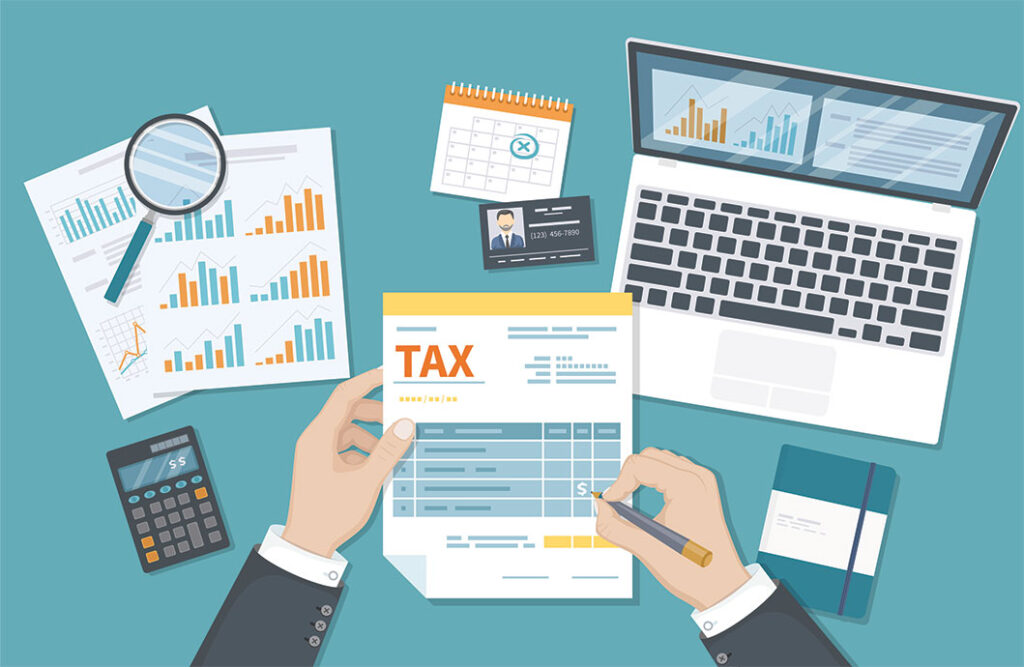Pandemic Relief Measures and Your Tax Return
Two emergency relief bills passed in 2020 in response to the COVID-19 pandemic will make this an unusual tax season for many taxpayers. The Coronavirus Aid, Relief, and Economic Security (CARES) Act was passed in March, and a second relief package was attached to the Consolidated Appropriations Act, 2021, in December. The federal government relied […]
Pandemic Relief Measures and Your Tax Return Read More »




![Are you leaving your job and considering whether to take a distribution from your 401(k), 403(b), or governmental 457(b) plan? if so, make sure you've considered all your options. In general, you have the following four options when you're eligible to receive a distribution from your employer retirement savings plan.1 Option 1: Leave the money in the plan This is the easiest option — you don't do anything at all. Your account can potentially benefit from continued tax-deferred growth (or potentially tax-free growth in the case of Roth accounts) While IRAs typically provide more investment choices than an employer plan, there may be certain investment opportunities in your particular plan that you can't replicate with an IRA You can receive penalty-free distributions as early as age 55 (50 for qualified public safety employees) compared with age 59½ for IRAs Qualified plans generally provide greater creditor protection than IRAs Note: This may not be an option if your vested plan balance is $5,000 or less; if you've reached your plan's normal retirement age; or if the payment is a required minimum distribution. Consult your plan's terms. Option 2: No rollover — take the distribution in cash (and securities if applicable) Most plans allow you to take a lump-sum distribution of your account balance. This move defeats the primary purpose of your plan — saving money for retirement; you risk not having enough money at retirement to cover your expenses All or part of your distribution may be subject to federal (and possibly state) taxes, and the taxable portion may be subject to an additional 10% early distribution penalty tax if you haven't reached age 55 (50 for qualified public safety employees); this may significantly reduce the amount you'll actually receive You'll lose the benefit of continued tax-deferred (or tax-free) growth Note: If your distribution includes employer stock or other securities, special tax rules may apply that can make taking a distribution more advantageous than making a rollover. Consult a tax professional. Note: Due to the Coronavirus Aid, Relief, and Economic Security (CARES) Act, penalty-free withdrawals of up to $100,000 will be allowed in 2020 for qualified individuals affected by COVID-19. Individuals will be able to spread the associated income over three years for income tax purposes and will have up to three years to reinvest withdrawn amounts. Option 3: Roll the funds over to an IRA Distributions from designated Roth accounts can be rolled over only to a Roth IRA; distributions of non-Roth funds can be made to a traditional IRA or "converted" to a Roth IRA. Your account can potentially benefit from continued tax-deferred (or tax-free) growth There are generally more investment choices with an IRA than with an employer plan You can freely move your money among the various investments offered by your IRA trustee, and you can freely move your IRA dollars among different IRA trustees/custodians (using direct transfers) With an IRA, the timing and amount of distributions are generally at your discretion [however you must start taking required minimum distributions (RMDs) from traditional IRAs after reaching age 722] No required distributions must be made from Roth IRAs during your lifetime Option 4: Roll the funds over to your new employer's plan (if the plan accepts rollovers) This move offers all of the advantages of Option 1, above You can consolidate your employer plan retirement savings You may be eligible for a plan loan, and you may be able to delay required distributions beyond age 722 One of the most common questions people ask is: Should I roll over my retirement money to an IRA or to another employer's retirement plan? Assuming both options are available to you, there is no right or wrong answer to this question. There are strong arguments to be made on both sides. You need to weigh all of the factors and make a decision based on your own needs and priorities.3 When evaluating whether to initiate a rollover, always be sure to (1) ask about possible surrender charges that may be imposed by your existing employer plan, or new surrender charges that your IRA or new plan may impose; (2) compare investment fees and expenses charged by your IRA (and investment funds) or new plan with those charged by your existing employer plan (if any); and (3) understand any accumulated rights or guarantees that you may be giving up by transferring funds out of your employer plan. It is best to have a professional assist you with this, because the decision you make may have significant consequences — both now and in the future. Keep in mind that you don't have to roll over your entire distribution. You can roll over whatever portion you wish. If you roll over only part of a distribution that includes taxable and nontaxable amounts, the amount you roll over is treated as coming first from the taxable part of the distribution. 1Special rules apply if you're the beneficiary of a plan participant. 2Due to the Coronavirus Aid, Relief, and Economic Security (CARES) Act, required minimum distributions (RMDs) are waived in 2020. 3If your distribution is eligible for rollover, you'll receive a statement from your employer outlining your rollover options. Read that statement carefully. You cannot roll over hardship withdrawals, required minimum distributions, substantially equal periodic payments, corrective distributions, and certain other payments.](https://financialgroup.com/wp-content/uploads/2021/01/LeavingJob_RTCore40_iStock-487945210_cropped.jpg)




